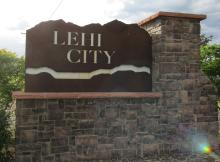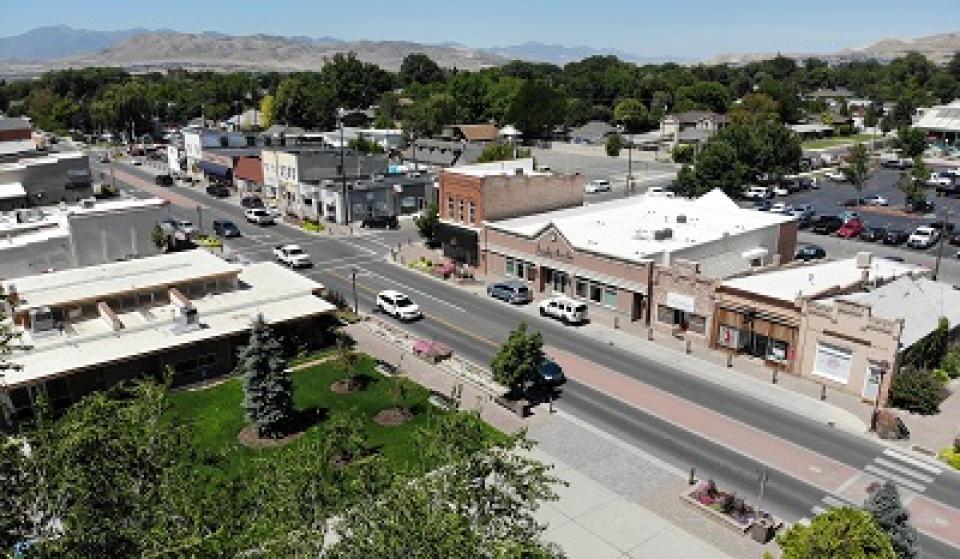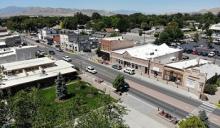
Lehi City, Utah has broken ground on its new citywide fiber optic broadband network. The network, which city leaders say should take somewhere around three years to complete, will be built on the back of Lehi’s Utilities Department, part of a growing trend of U.S. utilities using an historic infusion of federal funding to expand affordable broadband connectivity.
The Lehi Fiber Network will operate as an open access network, meaning that multiple ISPs will be able to utilize the city’s new infrastructure, providing a much-needed dose of broadband competition to local residents and businesses alike.
Five ISPs have already committed to providing service over the city-owned fiber, with the first customers expected to see service sometime in early 2023. Lehi’s partner ISPs have yet to specify tier pricing, but data consistently shows that such open access competition routinely drives down costs and improves service quality in regions where it’s adopted.
After hiring Magellan to conduct a feasibility study, the city in 2020 approved financing the network with a bond it hopes will be fully paid off by broadband subscriber revenues. In 2021, the city announced it had chosen Strata Networks — the largest independent cooperative in Utah — to build and operate the network.
“We hope you’re as impressed with us as we are with you,” Bruce Todd, CEO of Strata Networks, said at the recent groundbreaking ceremony. “We’ve been involved in the broadband Internet industry for over 20 years. Covid changed how we looked at things, it became very important to get Internet to everyone and especially school children.”
With a population of 80,000 residents, city officials told ILSR that the total cost of the network is expected to be roughly $68 million.
“Once the bonds are paid off, it’s possible that Lehi can decrease the overall cost of service to residents and organizations, while still collecting a fee to maintain and upgrade the network,” Lehi Fiber Administrative Services Manager Shaye Ruitenbeek told ILSR.
Interested users can register online. As with similar projects like Google Fiber, the city says that the volume of interest seen in online registrations will be used to determine which areas of the city are prioritized during the three-year construction effort.
As with so many fiber optic deployments, there was some initial public consternation about the need to build fiber huts on public land as part of the broader network, but the desire for better, more affordable access quickly overpowered such concerns.
“It amazes me that everyone wants fiber optics, but as soon as you put it on public land where there’s an existing easement, people say they don’t want it,” local resident Paul Ferris said at a local city council meeting. “I say put it as close to my house as possible, so I can have the most reliable network possible.”
Lehi Steers Clear Of UTOPIA, Utah Becomes A Hotbed Of Competition
Lehi chose not to join forces with UTOPIA, a nineteen-city community broadband coalition with decades of collective experience in both financing and deploying open access fiber networks. UTOPIA also has ample experience navigating what has been an often hostile response from regional Utah incumbents like Qwest (now Centurylink or Lumen) to market disruption.
Ruitenbeek told ILSR there were several reasons the city chose to go it alone for its open access fiber network build.

“The bond payment and financial model are based on a specific take rate,” Ruitenbeek said. “In both models, the risk of not meeting the take rate and having to come up with additional funds to make the bond payment is the City’s responsibility. However, revenues above the take rate in the UTOPIA model go back to UTOPIA, but revenues above the take rate in the Lehi model will stay within Lehi.”
Like a growing number of U.S. towns and cities, Lehi believes that its experience with running its own power utility will prove helpful with its broadband ambitions. But at the end of the day, the decision to not join UTOPIA was a matter of control, city officials said.
“Owning the infrastructure means that the Lehi City Council controls the future of the network,” Ruitenbeek added. “If Lehi had partnered with UTOPIA, Lehi would not have had a seat on the board nor control over the future of the network.”
“There were definitely conversations,” UTOPIA Chief Marketing Officer Kim McKinley told ILSR. “I just think it wasn't necessarily a match that worked for both entities.”
The city also held conversations with Google Fiber before deciding to go with Strata Networks. While Lehi chose to go its own route, McKinley was quick to highlight how Utah is very quickly becoming a hotbed of long overdue and welcome broadband competition in a country historically dominated by entrenched regional monopolies.
You’re just seeing so much competition in these marketplaces. Google Fiber’s fastest growing market is in Utah. Why? I’ve asked them straight out and they’ve said because it’s an educated population base. It’s young, it has really good education levels, and it’s had fiber providers here for twenty years.
A combination of cooperative, utility, and municipal broadband efforts are increasingly challenging regional telecom monopolies that have grown fat and comfortable thanks to decades of regional monopolization and politically-induced apathy. All laid particularly bare during the home education and remote work challenges during Covid lockdowns.
According to BroadbandNow, Utah currently ranks thirteenth among all U.S. states in terms of broadband availability and speed. Ookla’s speedtest tracking system suggests that Utah is currently the thirtieth fastest state in terms of median fixed broadband speeds.
Electrification As Inspiration
When asked about why they’ve decided to double down on broadband, Lehi city officials will routinely bring up electrification and the city’s 1925 decision to operate its own power company.
When Lehi’s then incumbent utility, Utah Power and Light, raised city streetlight power costs from 90 cents to $3/month, Lehi Mayor’s Joseph Broadbent unplugged every city street lamp from the grid for a year before settling on building the city’s own replacement utility.
The decision wasn’t a popular one with locals, who voted Broadbent — and every last city councilmember — out of office in the next election.
“I’ve thought about that often,” current Lehi Mayor Mark Johnson recently told the Lehi Free Press. “The mayor got upset because money was leaving his town when it shouldn’t have been. He decided that they would figure out how to supply their own power – that’s how Lehi Power started. They figured it out,” Johnson continued. “That we own our power is an enormous benefit to the city.”
There’s no shortage of parallels when it comes to U.S. rural electrification and the quest to ensure even, speedy, and affordable nationwide broadband access. But as UTOPIA and other providers and municipalities will be quick to attest, leveraging inspiration into practical broadband reality will come with no limits of modern challenges for the city in the years to come.
Header image of Lehi City sign courtesy of Wikimedia Commons, Attribution-ShareAlike 2.0 Generic (CC BY-SA 2.0)
Inline image of Lehi Fiber Network construction map courtesy of Lehi City
Inline image of Lehi City Main Street Historic District courtesy of Wikimedia Commons, Attribution-ShareAlike 4.0 International (CC BY-SA 4.0)








